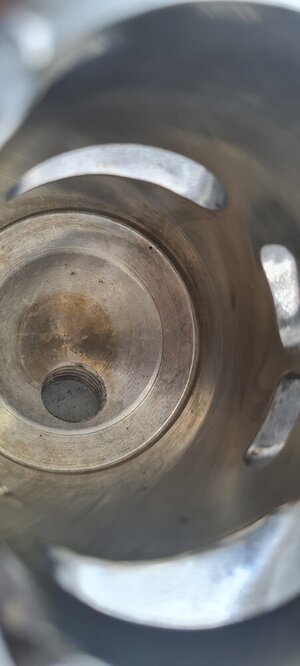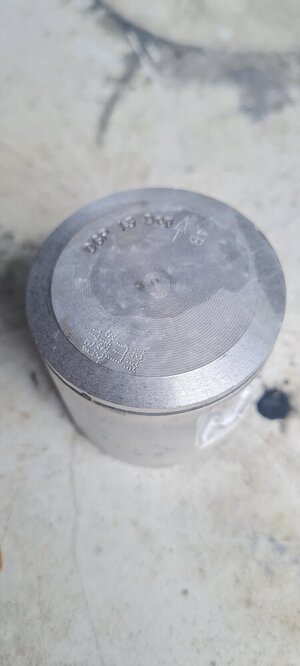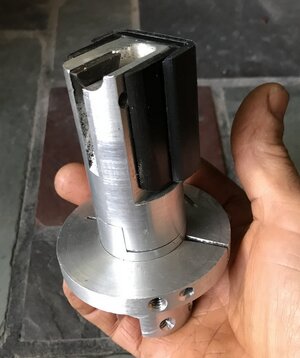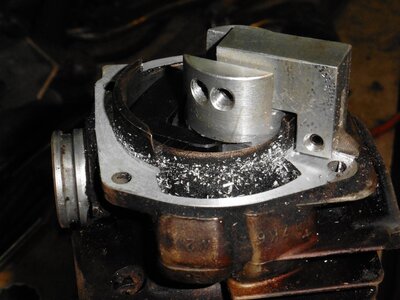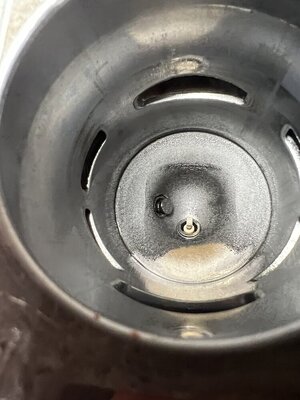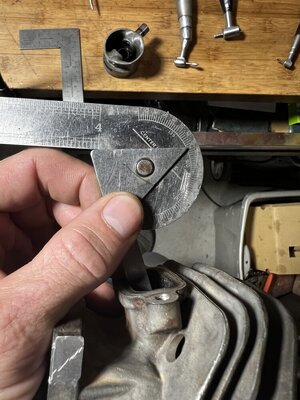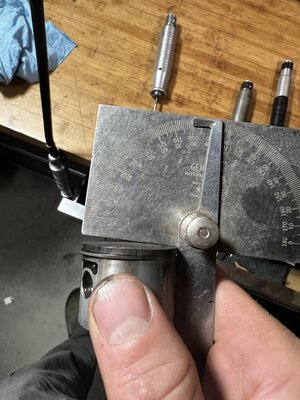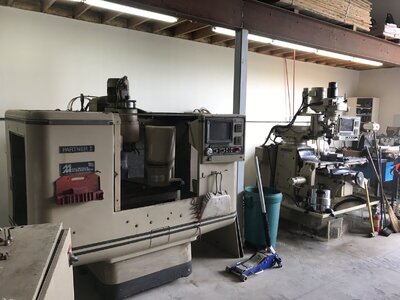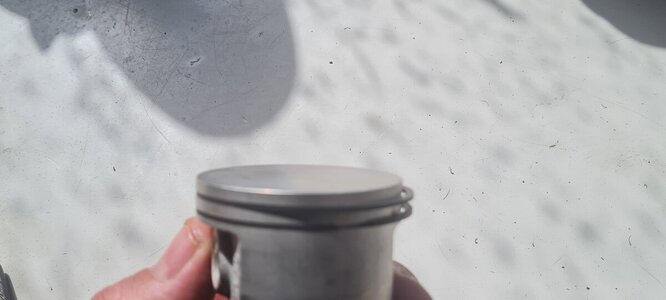The majority of my professional career somehow or another involved machining but I managed to avoid cnc the whole time, lol.
Would love to have the capability but I just don't have the head for cad and programing, tried many times, just no go. I have vague hopes of chat/gpt solving some of that for me, playing with it a bit but...
Takes me maybe 10 min to cut a band with an adjustable mandrel setup. Just clamp it in a vise, drop the cylinder on it and there's a screw adjustment accessible through the ex port that moves those black nylon channels out to the bore size. I have a set of a few nesting channels that get me from I think 36mm through 60mm. Set the depth stop from the base with feeler gauges, then apply even pressure while tuning it 'round and 'round. Sometimes not as neat as machine turning due to a bit of chatter but some sandpaper on top of an old piston or base turning mandrel easily cleans that up. @Treemonkey gets credit for putting me on to the whole mandrel cutting thing (and many other useful tidbits).
View attachment 394002
Just for shiits and giggles (and because someone suggested it couldn't be done) I made an adaptor to hand cut bases on skirted cylinders.
Not that I'd ever want to actually do it that way...
View attachment 394004








